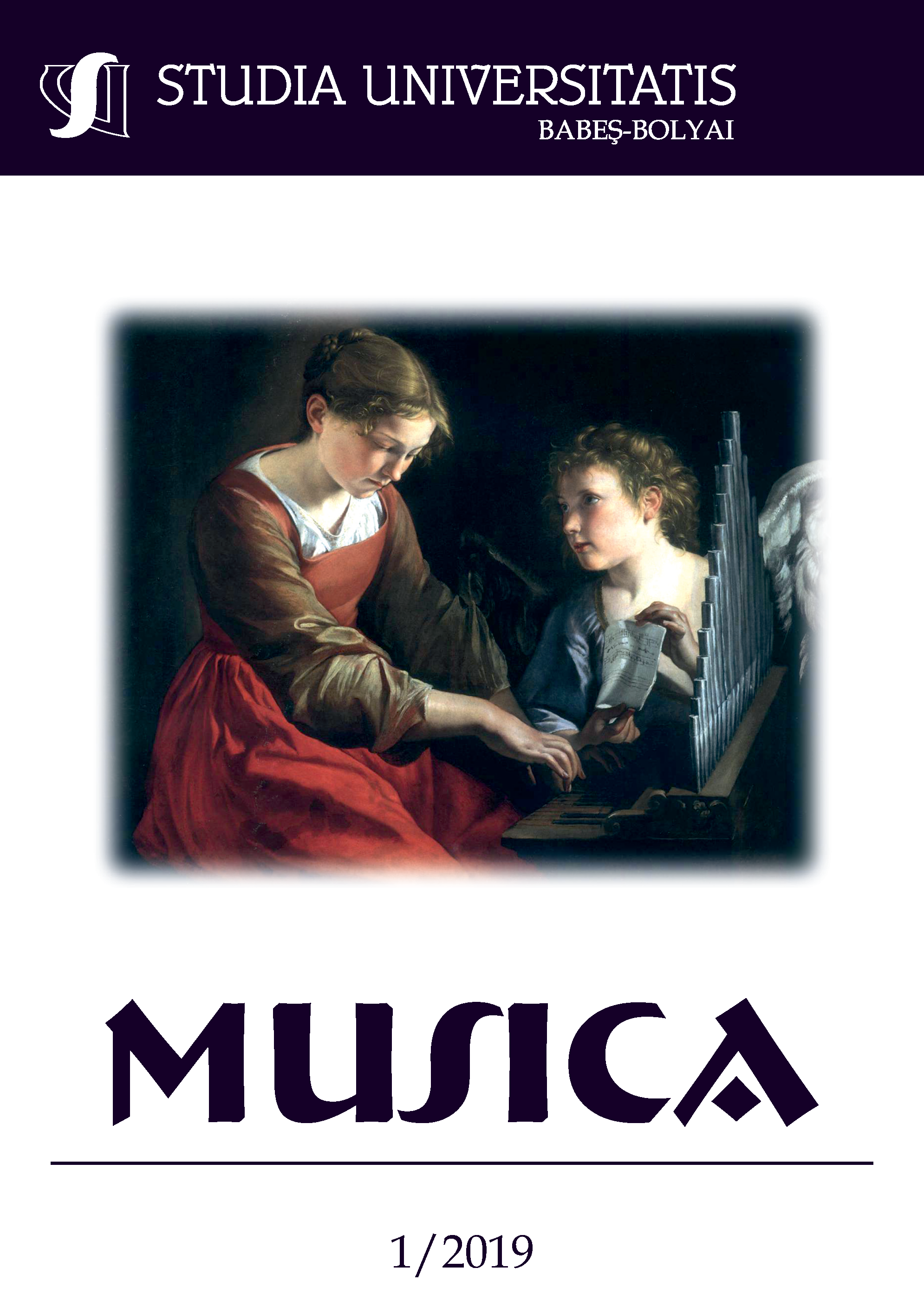PUCCINI’S VERISMO AND INNOVATIVE STYLE THROUGH THE LENSE OF LA BOHÈME
DOI:
https://doi.org/10.24193/subbmusica.2019.1.15Keywords:
Puccini’s verismo, innovative style, opera, La Bohème, post-romanticism.Abstract
Being one of the last Italian composers who have dedicated themselves exclusively to the operatic genre, Giacomo Puccini is considered to be the foremost representative of the dawn of the glorious era of Italian opera. The genius of Puccini lies in the antithesis of the extremes - “simplicity - complexity” -, from a musical, as well as a literary, dramaturgical and psychological point of view. La Bohème is the essence of Puccini’s verismo. The Italian composer uses a wide range of ways to illustrate the colorful dimensions of the human soul. In order to illustrate the musical language and the innovative style of the composer through La Bohème, we have chosen to focus on several pillars that help offer a general overview: tempo, rhythm and the composer’s instructions marked in the score; the role of the orchestra; expression by a simple, yet rich and splendid melodic approach; a keen sense concerning the abilities of the human voice; a very insightful and refined way of building characters, especially female ones. Alongside the main elements of composition, Puccini has a propensity to use motifs and leitmotifs in his music, and to employ aesthetic values, as well as elements of rhetoric. In this study we will review some benchmarks and important issues in order to decipher the eternal mystery of La Bohème, a valuable and enigmatic heritage left behind by Puccini.
References
Monographs:
Andrieș-Moldovan, Elena, Prototipuri feminine în creația pucciniană (Female Archetypes in Puccini’s Oeuvre), Mediamusica, Cluj-Napoca, 2007.
Andrieș-Moldovan, Elena, Puccini. Adevărul unei vocații (Puccini. A Vocation’s Truth), Media Musica, Cluj-Napoca, 2007.
Ashbrook, William, Puccini Operái (Puccini’s Operas), Zeneműkiadó, Budapest, 1974.
Banciu, Ecaterina, Itinerarii muzicologice: Mozart, Puccini, Toduță, Terényi (Musicological Paths: Mozart, Puccini, Toduţă, Terényi), Editura Media Musica, Cluj-Napoca, 2009.
Budden, Julian, Puccini, Európa Könyvkiadó, Budapest, 2011.
Constantinescu, Gabriela; Caraman-Fotea, Daniela; Constantinescu, Grigore; Sava, Iosif, Ghid de operă (An Opera Guide), Editura Muzicală a Uniunii Compozitorilor, Bucureşti, 1971.
Emanoil, Alexandru, Verismul, Editura Semne, București, 2012.
Fajth, Tibor, Dr. Nádor, Tamás, Puccini – Szemtől szembe (Puccini – Face to Face), Gondolat Könyvkiadó, Budapest, 1977.
Iliuț, Vasile - Călin, Anamaria, O carte a stilurilor muzicale (The Book of Musical Styles), vol. III, Editura Muzicală, București, 2011.
Lupu, Jean; Caraman-Fotea, Daniela; Oprea, Gabriel-Constantin; Racu, Nicolae; Sandu, Eugen-Petre, Dicţionar Universal de Muzică (A Universal Music Dictionary), Editura Litera Internaţional, Bucureşti-Chişinău, 2008.
Sandu, Vasile-Cristian, Stilemele verismului în evoluția operei moderne (The Styles of Verismo in the Evolution of the Modern Opera – PhD Thesis), Teză de doctorat, conducător științific: prof. univ. dr. Eduard Terényi, Academia de Muzică „Gheorghe Dima”, Cluj-Napoca, 2009.
Soare, Tiberiu, Pentru ce mergem la operă? (Why do we go to the opera?), Fundația Calea Victoriei, București, 2007.
Şorban, Elena Maria, Muzica nouă (New Music), Editura Eikon, Cluj-Napoca, 2014.
Scores, Recordings:
Puccini, Giacomo, Madama Butterfly, Tragedia giapponese in tre atti, Editura Ricordi, Copyright Casa Ricordi, Milano, 2007.
Puccini, La bohème, Opera completa per canto e pianoforte, Editura Ricordi, Milano, 2005.
Online Sources:
Aria Donde lieta usci with Angela Gheorghiu, www.youtube.com
Aria Donde lieta usci with Maria Callas, conductor: Tullio Serafin, www.youtube.com
Aria Si, mi chiamano Mimi with Maria Callas, www.youtube.com
Aria Si, mi chiamano Mimi with Mirella Freni, conductor: Herbert von Karajan, www.youtube.com
Duet Mimi – Marcello din actul III with Ilean Cotrubaş şi Brent Ellis, www.youtube.com
Duet Mimi – Marcello din actul III with Mirella Freni and Rolando Panerai, www.youtube.com
Duet Mimi – Rodolfo din actul III with Mirella Freni and Luciano Pavarotti, www.youtube.com
Duet Mimi – Rodolfo din actul IV, scena finală with Anna Netrebko and Piotr Baclaza, conductor: Daniele Gatti, www.youtube.com
Duet Mimi – Rodolfo din actul IV, scena finală with Mirella Freni and Luciano Pavarotti, www.youtube.com
Duet Mimi-Rodolfo din actul I with Mirella Freni and Luciano Pavarotti, conductor: James Levine, www.youtube.com
Murger, Henry, http://www.litkicks.com
Puccini, Giacomo, La bohème, film, www.youtube.com/watch?v=GwjjCjudgzI
Puccini, Giacomo, La boheme, www.imslp.org
Puccini, Giacomo, Tosca, www.imslp.org
Downloads
Published
How to Cite
Issue
Section
License
Copyright (c) 2019 Studia Universitatis Babeș-Bolyai Musica

This work is licensed under a Creative Commons Attribution-NonCommercial-NoDerivatives 4.0 International License.



